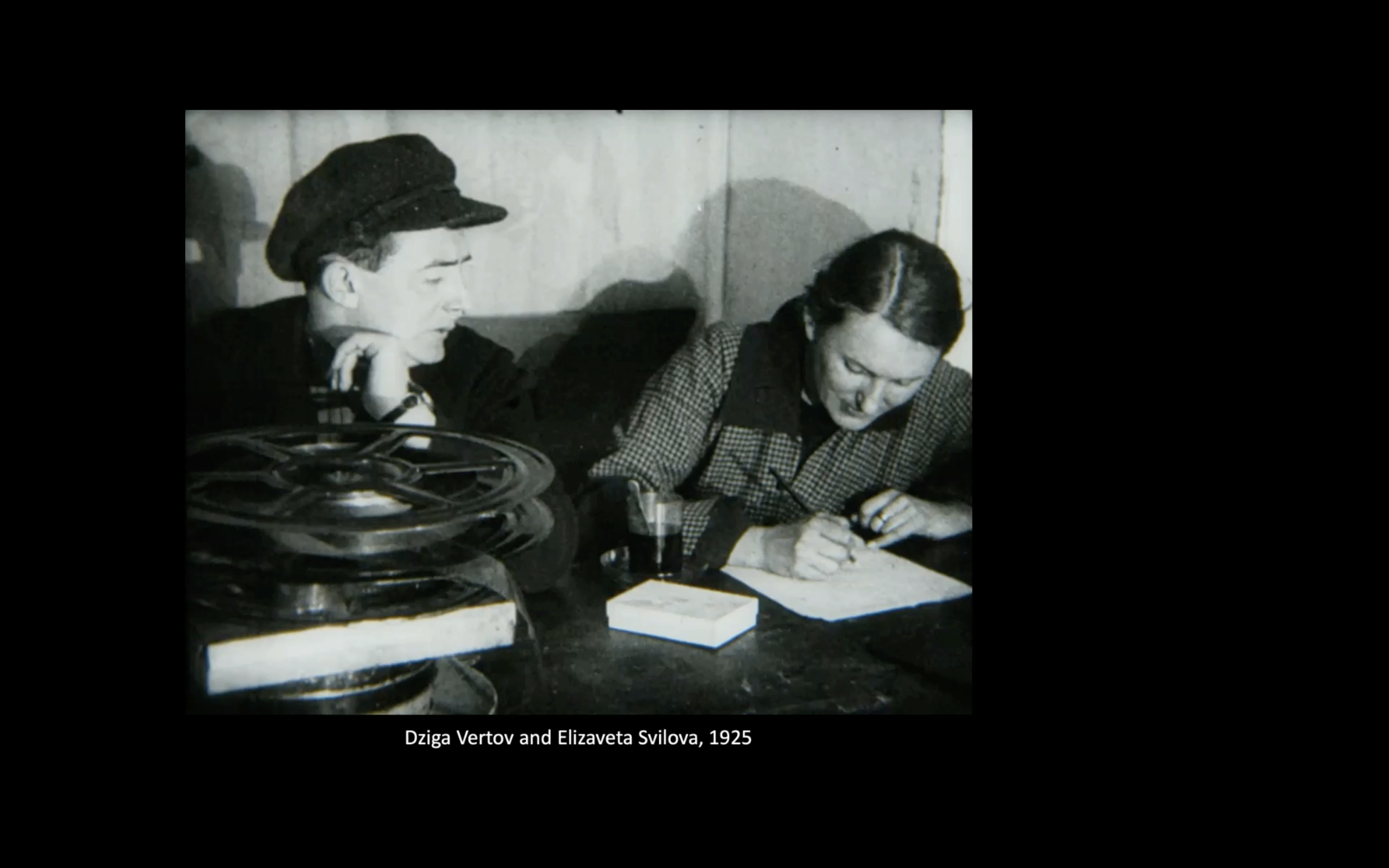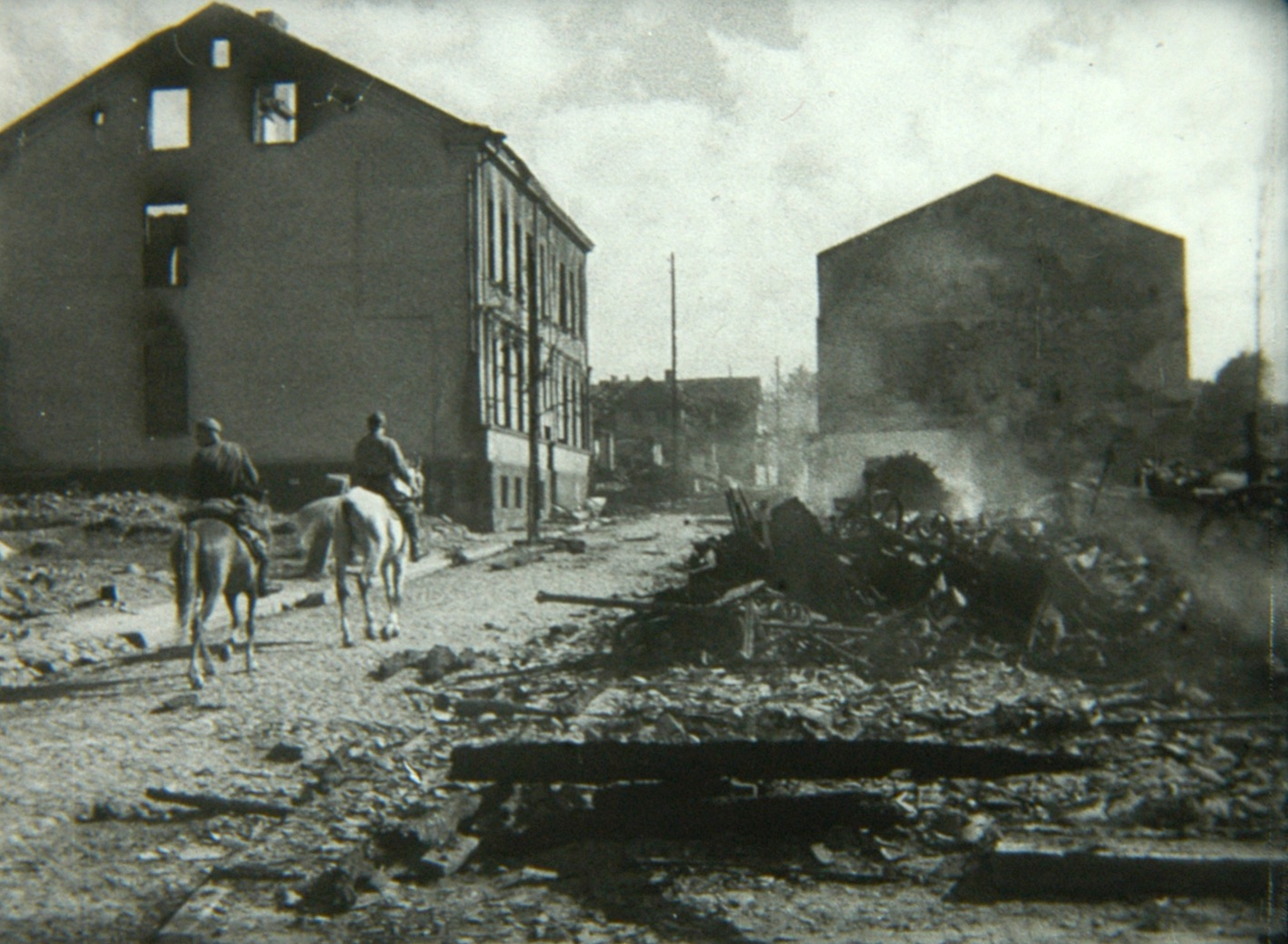Dziga Vertov’s film Blood for Blood (1941; also sometimes referred to as Blood for Blood, Death for Death and subtitled either “Atrocities of the German Fascist Aggressors on the Territory of the USSR” or “We shall not forget”) is one of the more mysterious works in the Vertov corpus. Many details about the film – among other things, the camerapeople and other film professionals involved; the actual sites depicted in the film; its release date – are unclear from the existing documentation. Certainly, the film dates to the period between June 22, 1941 and ca. October 17, 1941, when Vertov and Elizaveta Svilova left Moscow for Alma-Ata (today Almaty) as part of a massive evacuation of the city. This presentation, which will leave as many or more questions unanswered than answered, will examine Vertov and Svilova’s filmmaking plans immediately prior to and following the Nazi invasion; the relationship of the existing script to the film that has come down to us; the locales purported to be represented in the script/film; and the fate of the film in the aftermath of the evacuation to Kazakhstan. Along the way, the presentation will make mention of a peculiar document included in the film (but not in the script), which was much mentioned in the Soviet press in the fall of 1941, and will conclude with comments on the fate of Vertov’s own family during the Holocaust.
H2020 “Visual History of the Holocaust”. Research Seminar 2021–2022:
As part of the Horizon 2020 project “Visual History of the Holocaust”, this seminar focuses on film documents created by Soviet filmmakers during the liberation of Nazi-occupied territories. The history of the Holocaust in Eastern Europe, the literature on mass violence, and the history of still and moving images serve to contextualize this little-known corpus of Soviet film images documenting Nazi crimes. Participants are invited to examine the period from 1941 to 1947, and thus to consider the different phases in which the identity of the victims was explicitly discussed or ignored. The seminar aims to engage in a dialog about the visual traces of Nazi atrocities in Central and Eastern Europe and the USSR. The Research Seminar 2021–2022 is hosted by CERCEC and coordinated by Sarah Gruszka, Valérie Pozner, and Irina Tcherneva.
Registration:
For participation please register by sending an email (Subject: VHH Research Seminar Registration) to Irina Tcherneva (irina.tcherneva@palimpsestes.net).
Upcoming Sessions:
Tuesday, April 6, 2021, 16:00–18:00 CET
Irina Tcherneva (CNRS/Eur’ORBEM) and Valérie Pozner (CNRS/THALIM): “Soviet Footage on Nazi Crimes and Its Textual Documentation: Identification and Research Issues”
Tuesday, May 18, 2021, 16:00–18:00 CET
Nadège Ragaru (CNRS/CERI): “Un-Seen: The Manyfold Lives of a 1943 Deportation Film Footage across the East-West Divide”
Tuesday, June 15, 2021, 18:00–20:00 CET
Stuart Liebman (Queens College & CUNY Graduate Center): “Soviet Atrocity Images on American Movie Screens, 1942–1947: What, When, Where and By Whom?”


